Olivetti: a story of innovation and growth
Established in 1908 in Ivrea (near Turin) to manufacture typewriters, over the years Olivetti has undergone a series of transformations, displaying an impressive ability to adapt to continuous change in technology and on the information and communication markets.
 |
 |
|
|
Poster MP1,
Xanti Schawinsky -1935 |
Poster for Italy's first typewriter,
Teodoro Wolf Ferrari - 1912 |
Olivetti has moved successfully from mechanics to electronics, from office products to computers, IT systems and services and telecommunications.
Industry observers in Italy and worldwide have always admired Olivetti for its distinctive corporate style: a style based on technological excellence, innovation, quality and design, a strong focus on the market, as well as a keen interest in culture and the arts, attention to social issues and a commitment to continuous improvement in relations with employees and the territory.
In other words, Olivetti successfully combines technology and culture, efficiency and social responsibility, innovation and design.
Camillo Olivetti: the company's foundation
Ing. C. Olivetti & C., S.p.A. - the "first Italian typewriter factory" was founded by Camillo Olivetti on 29 October 1908 . It had 20 employees and a 500 sq.m production workshop with a weekly output of about 20 machines. The company's first typewriter , the M1, was presented at the Universal Fair in Turin in 1911.
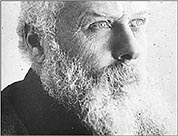 |
 |
|
| Camillo Olivetti | The first factory |
Olivetti grew rapidly, building up a diversified product offer and opening subsidiaries in Europe and the rest of the world. In 1920 , the company presented the M20 typewriter; by the end of the 1920s, thanks to new forms of labour organisation and the introduction of mass production, it reached an annual output of 13,000 machines. While the number of sales branches multiplied in Italy, the company began its international growth, opening its first overseas subsidiary in 1929, in Spain, which was followed by operations in Belgium, Argentina and a number of other European and South American countries. Typewriter production expanded with the introduction of new models, including the first portable typewriter, the MP1, launched in 1932. During the 1930s and 1940s , Olivetti moved into teleprinters, calculators, office furniture and fittings. It also manufactured electric typewriters and calculators and began production of numerical controls.
New manufacturing facilities were opened in Italy and, as from 1930, in other countries.
Adriano Olivetti: culture, growth, innovation
One of the key figures behind the company's rapid expansion was Adriano Olivetti , Camillo's son.
Appointed to the post of General Manager in 1932 and Chairman in 1938, Adriano established a corporate style and culture that won Olivetti a unique place in Italian and European industrial history.
 |
|
Adriano Olivetti |
Adriano paid particular attention to technological development, innovation and product quality, and strengthened the company's international operations. His interest in industrial design laid the foundations for a tradition of excellence that continues today. The social issues of the workplace were another major concern, together with the relationship between the company and the local community. A multi-faceted personality - entrepreneur, intellectual, publisher and town planner with a keen interest in social problems - Adriano extended his activities well beyond the confines of the industrial world. He commissioned new factories, offices, employee housing, canteens and nurseries and developed a comprehensive system of social services.
Under Adriano Olivetti's leadership, the 1950s was a time of extraordinary growth, during which the company established itself as the undisputed leader in mechanical office product technology : its flagship products were the Lexikon 80 office typewriter introduced in 1948, the celebrated Lettera 22 portable typewriter launched in 1950 and the Divisumma calculator designed by Natale Capellaro in 1948 and renewed in 1956.
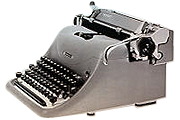 |
 |
 |
|
Olivetti Lexikon 80
M. Nizzoli - 1950 |
Olivetti Lettera 22
M. Nizzoli - 1950 |
Olivetti Divisumma 24 M.Nizzoli - 1956
|
In 1958, 50 years after its foundation, Olivetti had more than 24,000 employees, of whom approximately 10,000 in its 17 overseas subsidiaries; about 60% of production was exported. The expansion of the overseas sales and production operations was flanked in 1959 by the acquisition of Underwood, a major US typewriter manufacturer.
This period also saw the first major transformation in the company's history when, with great foresight, Olivetti invested in the new field of electronics . Realising that the new technology would revolutionise computing and office products, as early as 1952 Olivetti had opened a small R&D laboratory in New Canaan (Connecticut, USA); in 1955 it set up an electronics research lab near Pisa. Investments in electronics and the intensive work of the research team in Pisa drove the development of the Elea 9003, Italy's first electronic computer, which Olivetti presented in 1959. A device based entirely on transistors, the Elea 9003 placed Olivetti at the forefront of the world's computer manufacturers. Electronics seemed to be opening up a phase of exciting new growth.
The transition from electronics to information technology
 |
|
| Olivetti Headquarters A.Bernasconi, A.Fiocchi, M.Nizzoli - 1962 |
But Adriano Olivetti's sudden death in 1960 and a series of problems, linked in part to the costly acquisition of Underwood and the heavy financial outlay needed to support the Electronics Division on a domestic market that was not yet ready for computers, led Olivetti into financial difficulties. The Olivetti family had retained control of the company when its shares were admitted for trading on the stock exchange in 1960, but in 1964 it opened up the capital to a group of banks and Italian manufacturing companies. The same year, the Electronics Division was spun off to a company owned jointly by Olivetti (25%) and General Electric (75%); in 1968 Olivetti sold its minority shareholding.
 |
|
| The P101 desktop computer, design: M. Bellini - 1965 |
|
Although the sale of the Electronics Division was a setback for Olivetti's growth and technological development, work in the computer field was not abandoned entirely: attention shifted towards smaller devices and distributed data processing. In 1965, Olivetti presented the P101, an innovative programmable desktop computer using magnetic cards. Widely regarded as the forerunner of the personal computer, the P101 was developed by a research team headed by Pier Giorgio Perotto.
The 1970s was an important time during which Olivetti invested heavily in the electronics field to acquire new technology and develop new personnel skills. On the production floor, the company introduced innovative organisational models, partly to deal with the problems created by the lower labour content of electronic products compared to mechanical products. The catalogue was enhanced with new accounting machines, teleprinters and printer devices, while the technology and design of Olivetti's traditional office products continued to evolve. But the move into the electronics business at a time of high inflation and high interest rates that hampered access to the stock markets took its toll. Growing international competition exacerbated the company's problems, and by the end of the decade Olivetti was in serious financial difficulties.
In 1978 Carlo De Benedetti bought a stake in the company and took over its management. The completion of the conversion to electronics, a stronger focus on new product development and a financial recovery achieved through a recapitalisation programme and improved management efficiency put Olivetti on a solid footing for a new cycle of growth.
 |
|
| The M24 personal computer, design: E. Sottsass - 1982 |
|
Key products launched at this time included the first electronic typewriter (the ET 101 in 1978) and the first personal computer (the M20 in 1982), followed two years later by the M24, an outstanding success throughout Europe and the United States.
These and other products and services consolidated Olivetti's second major changeover, the move into information technology , a field in which it subsequently established itself as the European leader.
During the 1980s , Olivetti stepped up its growth with international acquisitions, agreements and alliances, as well as a number of venture capital operations. A key alliance was formed with the American company AT&T at the end of 1983.
With its move into information technology, Olivetti introduced a succession of systems lines and also expanded into the IT services business. Its solutions were based on the principle of standard open systems - a policy that was subsequently adopted by all the top players in the international IT arena.
 |
 |
|
| Olivetti Open System Architecture: standard open systems |
Olivetti Open System Architecture: distributed I.T. |
The office products offer was also enhanced, ranging from electronic word processing equipment and calculators to printers, fax machines, cash registers, photocopiers and office supplies. The development of bubble ink-jet technology opened up new business opportunities and paved the way toward fresh growth.
Olivetti and telecommunications
Perceiving the enormous potential of telecommunications , at the beginning of the 1990s , Olivetti and a group of investors (including some of the world's top telecoms operators) established Omnitel , to operate in the mobile communications field. After obtaining an operating licence, Omnitel began commercial service at the end of 1995: the start of an extraordinary success story. Similar strategic thinking lay behind the formation of Infostrada , a fixed-line telephone operator, in 1995. Within a few years, these two operations would transform Olivetti and project it into a new period of growth.
|
In the first half of the 1990s, growing global competition, falling prices and margins in the worldwide computer industry, and the weakness of the European market in general and the Italian market in particular forced Olivetti to implement a long and costly restructuring.
In September 1996 , a particularly difficult time for the company, under the leadership of Roberto Colaninno Olivetti embarked on a sweeping transformation to strengthen its position in telecommunications and re-organise its information technology business.
The change involved a series of new telecommunications alliances, most notably with Germany's Mannesmann group (1997), and the sale of the personal computer division (1997) and the systems and services operation (1998). With these disposals, the Group re-focused its IT business on a limited number of specific areas (office products; specialised systems; IT services for the Italian market), but achieved a business and financial recovery that enabled it to re-gain the confidence of the international financial community.

Roberto Colaninno then took action to strengthen Olivetti's shareholding structure and implement a new growth strategy in telecommunications. In February 1999, Olivetti and its Tecnost subsidiary announced their intention of launching a voluntary public tender offer on 100% of Telecom Italia ordinary shares. The operation closed in June with the acquisition of more than 52% of Telecom Italia ordinary stock, for an outlay of 31.5 billion euros. At the same time, in compliance with anti-trust regulations, Olivetti sold its equity in Omnitel and Infostrada to Mannesmann. Control of Olivetti passed to Bell S.A. , a Luxembourg-based company formed by a group of Italian financiers and industrialists.
The heavy burden of debt taken on to finance the tender offer, combined with falling share prices, especially among Internet and telecommunications stocks, led to further change. In July 2001, Bell reached an agreement to sell its controlling stake in Olivetti to the Pirelli and Benetton groups. As a result of this transaction, which closed in September 2001, the Olimpia company, held by Pirelli, Edizione Holding (Benetton group), Intesa-BCI and Unicredito, became Olivetti's majority shareholder, with a stake of almost 29%. The appointment of the new chief executives officers Marco Tronchetti Provera and Carlo Buora marked the start of a new phase that sees the Olivetti company strongly focused on the telecommunications business through the companies in the Telecom Italia group, with management of its operations co-ordinated closely with that of Telecom Italia group.
In March 2003 the plan to merge Telecom Italia by incorporation into Olivetti was announced with the aim of simplifying the structure of the Group, consistent with the market's wishes. The merger plan was approved by the respective Shareholders' meetings of Telecom Italia and Olivetti on 24 and 26 May 2003.
Following the merger, which became effective from 4 August 2003, Olivetti changed its company purpose and adopted that of Telecom Italia as well as adopting the Telecom Italia name .
The identifying details of the new “Telecom Italia” are:
Telecom Italia S.p.A.
Registered office in Milan, Piazza degli Affari no. 2
Share capital Euro 8,845,640,599.40
Tax number and Milan Companies Register Number 00488410010
Chairman: Marco Tronchetti Provera
Vice-Chairman: Gilberto Benetton
Chief Executive Officers: Carlo Buora and Riccardo Ruggiero
General Managers: Riccardo Ruggiero and Giuseppe Sala
 Palazzo Uffici 1 (PU1) in Ivrea, head office of Olivetti SpA . Designed in 1962 by architects G.A. Bernasconi, A. Fiocchi and M. Nizzoli, PU1 is still an interesting example of office architecture today
Palazzo Uffici 1 (PU1) in Ivrea, head office of Olivetti SpA . Designed in 1962 by architects G.A. Bernasconi, A. Fiocchi and M. Nizzoli, PU1 is still an interesting example of office architecture today
 Palazzo Uffici 2 (PU2) in Ivrea
Palazzo Uffici 2 (PU2) in Ivrea
built next to PU1 in 1988 from a project by architect Gino Valle
 The facade of the Nuova ICO factory
The facade of the Nuova ICO factory
in Ivrea designed by L. Figini and G. Pollini in 1949

The Olivetti Technical Centre and Warehouse
in Yokoama, Tokyo (Japan), designed by Kenzo Tange in 1970

The towers of the Olivetti office building in Frankfurt
(Germany) designed by Egon Eiermann (1972)


 In 2001, to celebrate the centenary of the birth of Adriano Olivetti, Olivetti SpA, the Fondazione Adriano Olivetti and the Associazione Archivio Storico Olivetti organised an international conference "Building the Human City" and an exhibition "Adriano Olivetti and Town Planning". To mark the centenary, Olivetti produced and published the site Adriano Olivetti: Building the Human City
In 2001, to celebrate the centenary of the birth of Adriano Olivetti, Olivetti SpA, the Fondazione Adriano Olivetti and the Associazione Archivio Storico Olivetti organised an international conference "Building the Human City" and an exhibition "Adriano Olivetti and Town Planning". To mark the centenary, Olivetti produced and published the site Adriano Olivetti: Building the Human City

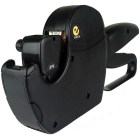




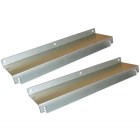


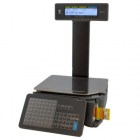
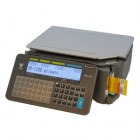



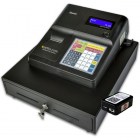


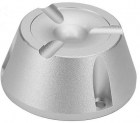
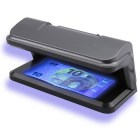










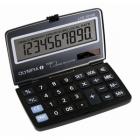


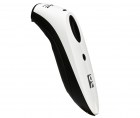

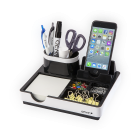



_140x140.jpg)


